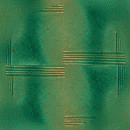 「One is reminded in this connection of a story concerning Kobori-Enshiu.
「One is reminded in this connection of a story concerning Kobori-Enshiu.
Enshiu was complimented by his disciples on the admirable taste he had displayed in the choice of his collection.
Said they, "Each piece is such that no one could help admiring.
It shows that you had better taste than had Rikiu, for his collection could only be appreciated by one beholder in a thousand."
Sorrowfully Enshiu replied: " This only proves how commonplace I am.
The great Rikiu dared to love only those objects which personally appealed to him, whereas I uncosciously cater to the taste of the majority.
Verily, Rikiu was one in a thousand among tea-masters."」 (From the Book of Tea-Art Appreciation, Charles E. Tuttle Co., Rutland, Vermont, Tokyo, Japan)
This part is very important about the greatness of art appreciation.
The facts mean the great art is not necessarily appreciatted by the taste of majority.
Image Designer: Izumi Mori











